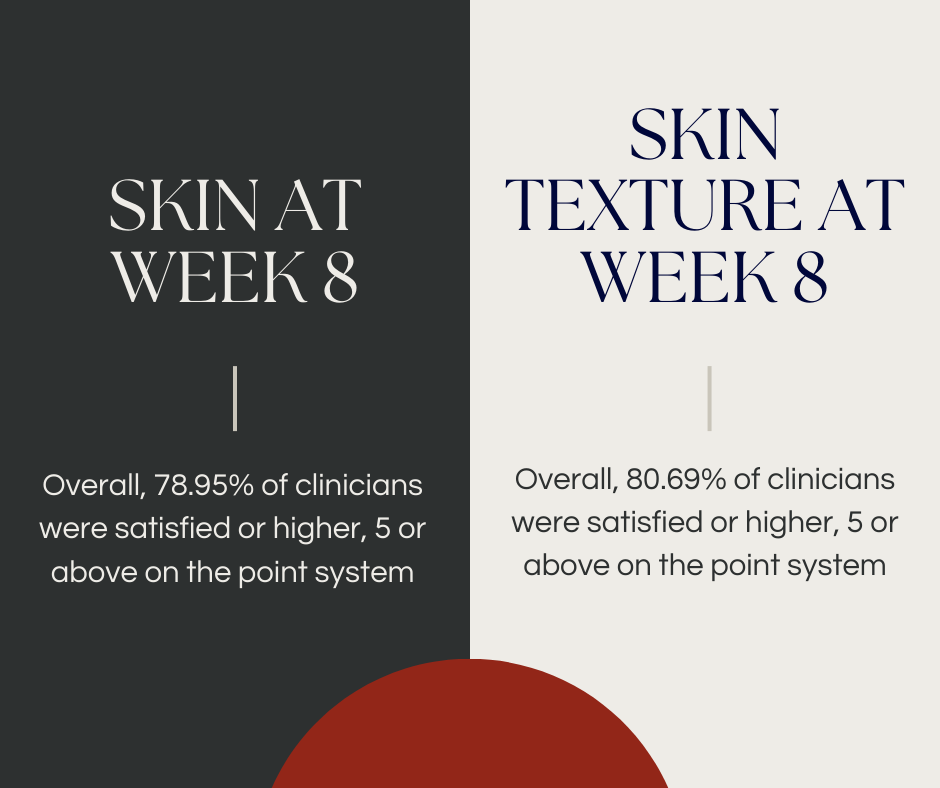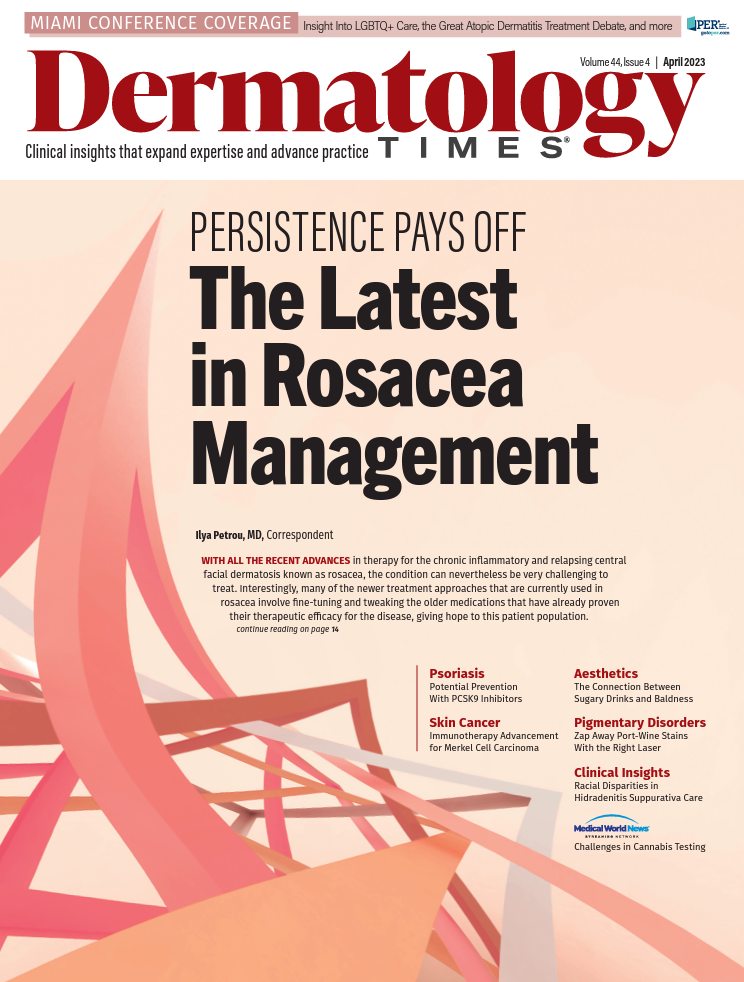- Case-Based Roundtable
- General Dermatology
- Eczema
- Chronic Hand Eczema
- Alopecia
- Aesthetics
- Vitiligo
- COVID-19
- Actinic Keratosis
- Precision Medicine and Biologics
- Rare Disease
- Wound Care
- Rosacea
- Psoriasis
- Psoriatic Arthritis
- Atopic Dermatitis
- Melasma
- NP and PA
- Skin Cancer
- Hidradenitis Suppurativa
- Drug Watch
- Pigmentary Disorders
- Acne
- Pediatric Dermatology
- Practice Management
- Prurigo Nodularis
- Buy-and-Bill
Publication
Article
Dermatology Times
Tirbanibulin Improves Skin in Patients with Actinic Keratosis
Author(s):
A poster presentation from SBS 2023 reviewed the clinician satisfaction of tirbanibulin for the treatment of actinic keratosis.
Treating actinic keratoses (AKs) in a timely and effective manner is crucial, as there is no direct way to predict which hyperkeratotic lesions of chronically sun-exposed skin will become cancerous, according to Todd Schlesinger, MD, Leon Kircik, MD, and colleagues. Schlesinger, Kircik, et al’s data was presented as a poster at the 2023 South Beach Symposium meeting in Miami Beach, Florida. Data from the single-arm prospective cohort study, PROAK (NCT05260073), demonstrated that clinicians were satisfied that the majority of patients who received once-daily tirbanibulin treatment for 5 days achieved better-looking skin and skin texture by week 8.
The objective of the PROAK study was to evaluate clinician satisfaction with tirbanibulin treatment’s ability to improve “how skin looks” and “skin texture” in the treated area of patients with AKs treated with tirbanibulin in community practices in the US. AKs impact patients' quality of life because they often appear in visible areas that are commonly sun-exposed areas, such as the face, scalp, and arms. According to the study, patients have reported AKs affecting their emotional and social functioning. Tirbanibulin is a synthetic, potent anti-proliferative agent that inhibits polymerization and disrupts Src kinase signaling that are upregulated in AK and intraepithelial squamous cell carcinoma (iSCC). The study authors believe that assessing clinician-reported outcomes and treatment effectiveness associated with an 8-week treatment course of tirbanibulin for AKs will help inform health care providers and payers on how to aid their clinical and reimbursement decisions.
In total, 300 participants were enrolled from 32 community practices in the US. Clinicians completed surveys and clinical assessments regarding the skin’s appearance at baseline and week 8. At week 8, clinicians reported their satisfaction with tirbanibulin’s ability to improve the appearance and texture of skin compared to baseline and scored on a 7-point adjectival response of 1 (extremely dissatisfied) to 7 (extremely satisfied). The clinician-reported outcomes were analyzed descriptively using week 8 data.
Regarding how the skin looks at week 8:

- 0.34% of clinicians were extremely dissatisfied
- 0.69% of clinicians were very dissatisfied
- 5.52% of clinicians were dissatisfied
- 14.14% of clinicians were somewhat satisfied
- 23.45% of clinicians were satisfied
- 33.10% of clinicians were very satisfied
- 22.41% of clinicians were extremely satisfied
- Overall, 78.95% of clinicians were satisfied or higher, 5 or above on the point system
Regarding the improvement in skin texture at week 8:
- 0.34% of clinicians were extremely dissatisfied
- 0.69% of clinicians were very dissatisfied
- 5.52% of clinicians were dissatisfied
- 12.41% of clinicians were somewhat sati
- 25.86% of clinicians were satisfied
- 33.79% of clinicians were very satisfied
- 21.03% of clinicians were extremely satisfied
- Overall, 80.69% of clinicians were satisfied or higher, 5 or above on the point system
In the PROAK study, the majority of patients were male, had Medicare health insurance, had Fitzpatrick skin type II with self-reported smooth skin, and moderate skin photodamage in the AK-affected area.
The study authors concluded that “the demonstrated effectiveness and the safe and tolerable profile of once-daily tirbanibulin treatment highlights the benefits associated with this novel therapeutic option in routine community practice settings, for optimal management of AKs.”
Reference
- Schlesinger T, Kircik L, Armstrong A, et al. Clinicians satisfaction with tirbanibulin treatment’s ability to improve ‘how skin looks’ and ‘skin texture’ in the treated area, among patients with actinic keratosis treated with tirbanibulin in community practices across the US (PROAK study). Poster presented at the 2023 South Beach Symposium meeting; February 9-12, 2023; Miami Beach, FL; Accessed February 12, 2023.







